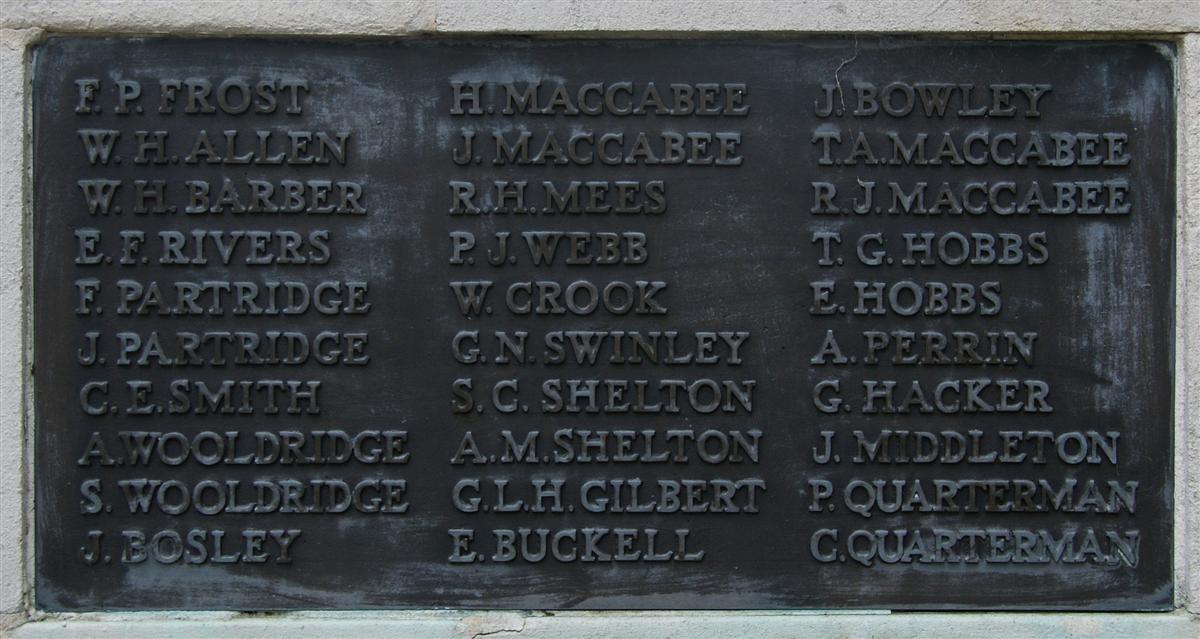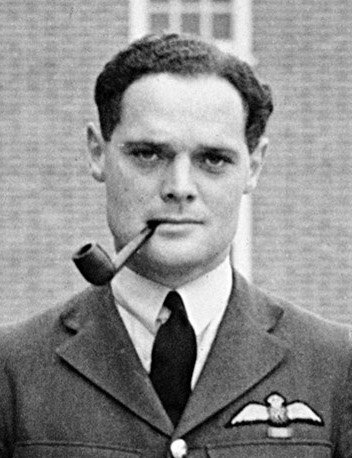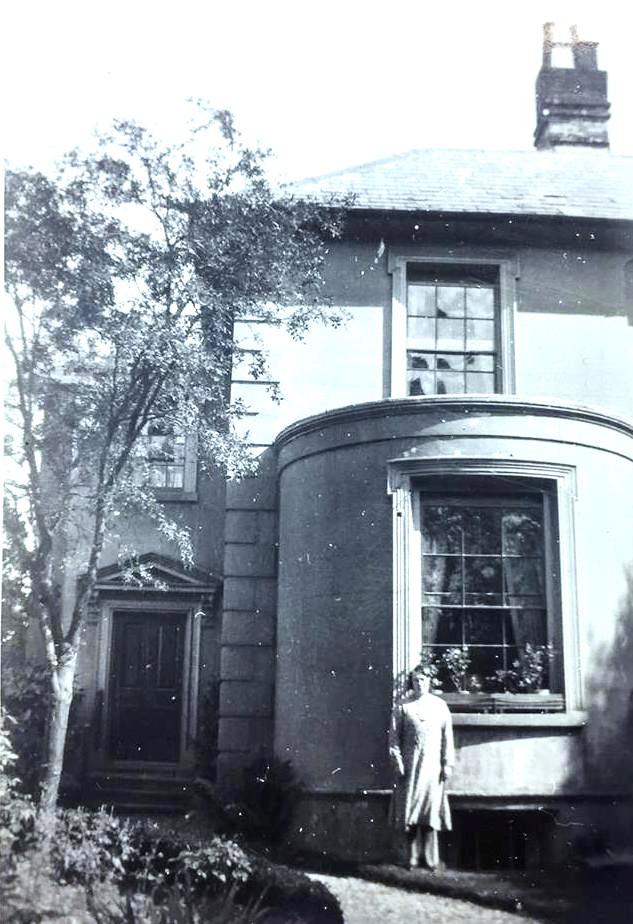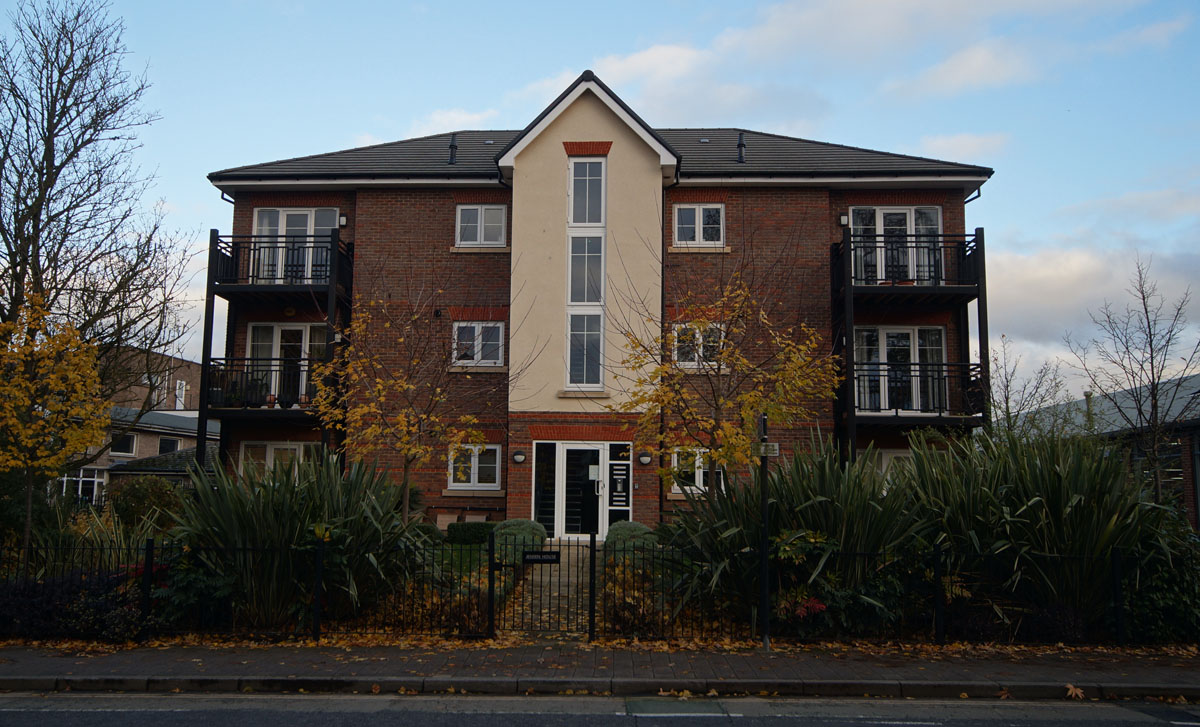Eric Hobbs
2nd Lieutenant Eric Hobbs, 2nd Battalion, The Queen’s (Royal West Surrey Regiment)

The regimental badge of the Queen's - as used on CWGC headstones. |
Eric was educated at Bedford House School in Folkestone, and then for three terms only at St Edward’s School, Oxford (1911-12). After school he joined Thomas Wilson Sons and Company as an apprentice. This was a shipping company, commonly known as the Wilson Line, which specialised in the transport of iron ore from Scandinavia to Hull whence it would go to feed the blast furnaces around Sheffield.
|
Lea Hurst - 18 Newtown Road (Herb Payne) |
His army medical record shows he was relatively tall for the time (5ft 9ins) and weighed 11 stone.
Following his father’s retirement Eric’s parents moved around a lot – to Hythe in Kent, Weybridge in Surrey and then to Newbury, first to 2 Belvedere Drive and then to a house known as Lea Hurst (18 Newtown Road) which has since been demolished and replaced by a block of flats. His mother was originally from Hill Green, Leckhampstead, so the choice of Newbury for their retirement was not remarkable.
Following his officer training Eric was sent to France where he joined the 2nd Battalion of the Queen’s at on 8 October. The battalion had suffered severe casualties during the opening assault of the Battle of Loos and replacement officers were in demand. Eric joined B Company and became its bombing officer – leading a specialist group of grenade throwers (bombers).
When he joined the battalion it was a part of 22nd Brigade, 7th Division; a reorganisation in December 1915 saw it move to the 91st Brigade in the same division.
|
Lea Hurst was a house in Newtown Road (No 18), it was the northern of a pair of semi-detached houses that have been demolished and replaced by these flats. |
In the early hours of 1 July 1916 the battalion assembled in support trenches south east of the German-held village of Mametz preparing to go over the top as the Battle of the Somme began. This was the long-awaited ‘Big Push’. It would not be in the first wave of the assault; its rôle was to take over the advance from the 22nd Manchesters, whose task was to take the 1st German line. The 2nd Queen’s had three objectives –
1. The village of Mametz and high ground along the Mametz-Montauban road.
2. Fritz Trench, Bright Alley and Bunny Alley (strong and well-made German trenches).
3. High ground 150yds south of Mametz Wood.
Ahead of them the 22nd Manchesters rapidly took the German front line and pressed on towards the village, suffering heavy casualties in the process. The 2nd Queen’s took over and moved on pressing forward to the east of the village towards Danzig Alley (the Mametz-Montauban road). B company, including - and probably led by - Eric and his bombers, entered Fritz trench (a part of the German support line) and a hard fight ensued. Eventually the defenders were beaten, but not before Eric had been mortally wounded. He died that same day.
In terms of that dreadful day, the 7th Division had made significant progress achieving most of its objectives; to the east and south the 18th and 30th Divisions (XIII Corps) and the French 6th Army had also achieved great success. To the north all the way up to Serre and Gommecourt it was another story - the well-known tale of massive casualties with minimal or zero gain.
News of Eric’s death quickly reached home and a short obituary appeared in The Times a week later. The next issue of the local paper carried an announcement:
Newbury Weekly News, 13 July 1916 – Killed in Action
HOBBS – Killed in action on the 1st July, 1916, Eric Hobbs, 2nd Lieut The Queen’s, youngest son of Mr and Mrs Ernest Hobbs, Lea Hurst, Newbury (formerly of Gosport, Hants), aged 21.
More detail was printed in the news columns:
Newbury Weekly News, 13 July 1916 – Local War Notes
Another local officer to lose his life is Second Lieutenant Eric Hobbs, Royal West Surrey Regiment (Queen’s), who was killed on July 1, aged 21. He was the youngest son of Mr and Mrs Ernest Hobbs, of Lea Hurst, Newbury, and was educated at Bedford House School, Folkestone, and St Edward’s School, Oxford. He was in the service of the Wilson Line, and was in Norway when the war broke out. He returned and joined the Public Schools Battalion, and nine months later accepted a commission in the Queen’s. Last September he went to the front, where he had done good work as bombing and patrol officer. [This report was almost identical to that published in the Times on 8 July.]
Eric was buried near where he fell, in a makeshift cemetery west of Fritz Trench, towards Bunny Wood. After the war his remains were moved to grave III. D. 10 at Dantzig Alley British Cemetery, Mametz a few yards south west of Fritz trench.

Eric's name on Newbury War Memorial, below his brother Thomas. (right column) |
Locally he is remembered on tablet 2 ofthe Newbury Town War Memorial, his name is immediately below that of his brother Thomas. Their names were also recorded on the roll of honour board in St John’s Church, Newbury until the board was destroyed along with the church by an enemy bomb in February 1943.
The brothers are also remembered at their old school, St Edward’s, Oxford, where the wooden panelling lining the school chapel incorporates individual painted panels, one for each of the 121 old boys who fell in the service of their country.
Eric’s brother Thomas Godwin Hobbs died in 1918 while serving as an RAF pilot; his story is told here.

Douglas Bader - Ernest's stepson and WW2 hero (wikipedia) |
The third brother Ernest William Hobbs did not serve in the war. Educated like his brothers at St Edward’s School, Oxford, he went on the get an MA from Durham in 1910 before entering the priesthood; he was deaconed in 1911 and priested in 1912. During the war years he was curate at Hythe (1913-14) and All Saints, Twickenham (1915-17) before taking a position in the Diocesan Office at Southwark (1917-22). He was an executor of Thomas’ will in 1918. In 1922 he married Jessie, recently widowed when her first husband died as a result of wounds received in 1917. By this marriage Ernest also gained a step-son who was to become very well known during the next war – Douglas Bader. Bader also went to St Edward’s, no doubt selected by his step-father. The school also educated another RAF hero – Guy Gibson of Dambusters’ fame.



